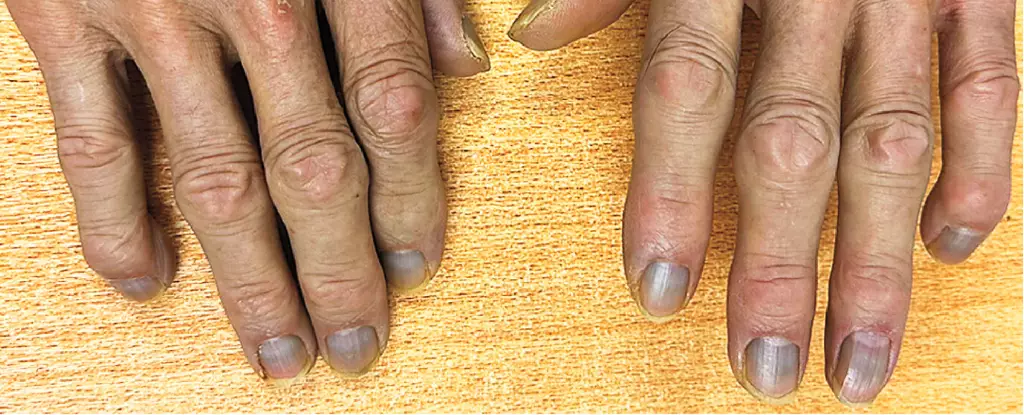An 84-year-old man recently found himself at a Hong Kong hospital, facing complications due to urinary flow obstruction. However, what initially drew the attention of healthcare professionals was not solely the urinary issues he experienced but the puzzling gray discoloration apparent on his skin, eyes, and nails. The allure of this case lies not only in the man’s advanced age and his unrelated medical complaint but also in the mystery surrounding the discolored pigmentation, which had been present for five years prior to his hospital visit.
This case serves as a compelling reminder of how diverse and intricately interconnected human health can be. Even seemingly benign symptoms can unveil underlying health issues. Clinicians faced the curious challenge of determining the cause of the man’s skin color without any overt signs of silver exposure in his everyday life, establishing an intriguing puzzle for medical professionals to solve.
Upon conducting blood tests, the medical team made a startling discovery: an exceptionally high level of silver in the man’s system, more than 40 times the concentration typically found in healthy individuals. This led to a diagnosis of argyria, a rare condition characterized by a systemic accumulation of silver in the body’s tissues. The findings revealed that silver had precipitated into tiny oxidized granules lodged beneath the man’s skin, most densely situated in the sweat glands, blood vessels, and dermal fibers.
Argyria is a significant medical condition that warrants greater attention than it often receives. Historically associated with professions where exposure to silver was common, such as mining and artistry, the contemporary cradle of argyria often includes pharmaceutical products containing silver as an antimicrobial agent. Despite ongoing use in alternative medicine, colloidal silver has garnered warnings from health authorities like the US Food and Drug Administration (FDA), which cautions against its unproven efficacy and safety.
Historically, individuals were exposed to silver in occupational settings. The contemporary landscape is vastly more complex as silver amalgamates into the daily lives of many through unregulated dietary supplements, often marketed under claims of detoxification and immune support. Ironically, such exposure is prevalent among those seeking alternative health remedies, thereby rendering the appeal of silver both potent and perilous.
Moreover, silver can infiltrate the body through multiple avenues: inhalation, dermal absorption, or ingestion. Once inside, these particles can freely circulate, bonding to various tissues. Compounding the issue is the interaction of silver with ultraviolet radiation, which can lead to photochemical reactions that amplify the grayish-blue pigmentation characteristic of argyria, presenting a clinical interest not just for dermatologists but across a varied realm of medical specialties.
For the patient in question, the benign nature of his silver accumulation implies that, barring extreme cases, the long-term health ramifications may be minimal. The absence of significant systemic disturbances is a relief considering the unsettling visual of slate-gray skin. However, it remains indispensable for the medical team to monitor potential interactions with pharmaceuticals, particularly since silver can reduce the absorption of critical medications, such as certain antibiotics.
Yet, the most sobering aspect is the recognition that there are no known treatments for the eradication of silver from the body. The permanence of the condition raises essential questions about quality of life, patient perceptions, and how society values physical appearance against the backdrop of health. It forces patients and doctors alike to confront not only the scientific dimensions of health but also the sociocultural facets tied deeply to aesthetics.
The source of the man’s silver exposure remains a tantalizing mystery. Both workplace investigations and domestic inquiries yielded no leads. Such enigma emphasizes the need for ongoing vigilance and investigation. As the medical community navigates these uncertain waters, the challenge remains: how to disentangle the threads of occupational exposure from the complexities of modern medicine.
While the mystery of the silver in this elderly man remains unsolved, the case of argyria serves as a thought-provoking example of the human body’s capacity for resilience amid unfathomable conditions. As the patient embarks on a new journey marked by a poignant yet profound transformation, his case underlines the intersection of history, medicine, and the human experience—provoking essential questions about how we understand and manage health in an increasingly complex world.

